-
Become an expert and follow all care tips for the Calathea plants
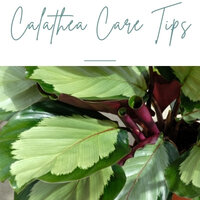
Calathea is a plant with unique properties and with its tropical atmosphere it gives: colour, soul and life to your home. It has to be said that calathea is not the easiest houseplant to care for and maintain. It is also known as the 'living plant', because its leaves close at dusk and open during the day.
Why is this plant so desirable, how and when to water it, and why does your calathea have brown leaves?
In this blog we will explain all your doubts about this tropical jewel and you will discover the secrets to become an expert in keeping calathea!
information about the calathea
Calathea is originally a Brazilian (and very beautiful) plant. Of course, it also grows in other tropical areas in the surrounding countries. Here it is known as a houseplant and for its wide variety of impressive leaves. From purple leaves to pink, to stripes and other beautiful patterns. There are all kinds of colours and patterns, there are even silver-coloured specimens!
Another fun fact: as the leaves of the calathea are quite tough, the local people often use them as wrapping material. You can often see fresh fish wrapped in a Calathea leaf. The natives of the Brazilian rainforest also gave the plant the name 'korbmarante', because they made braids out of Calathea leaves.
You can find a lot of different species of Calathea in Spanish living rooms. Not all calatheas are usually real 'drama-queens', some are less demanding. The care of all the different species of calathea is almost the same.
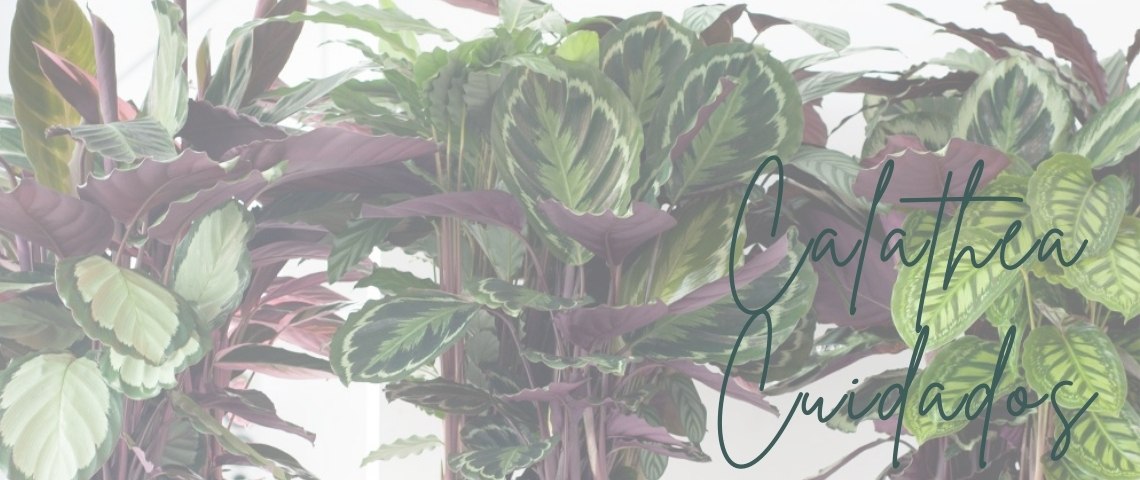
its characteristics
Calathea is a genus of plants in the family Marantaceae. The genus name calathea is derived from the Greek: kalathos (meaning cup), that is for its basket or cup-shaped flowers. Other common names for calathea are: calathea, prayer plant and maranta.
Many prayer plants require less light than other popular plants and, with proper care, will provide: colour, geometry and movement. The most peculiar thing about these plants is that their leaves open and close depending on the time of day and the available light. It is as if they wake up in the morning and sleep at night.
Their foliage is very attractive and impressive in many homes. Both sides of the leaves have different colours. That's why they bring life and movement at different times of the day - the calathea is never boring! In addition, all marigolds are non-toxic and pet friendly, ideal for households with pets or children.
a difficult houseplant
Most people living in cities know the challenge of finding the perfect houseplant that will not only add more greenery to their indoor space, but also grow happily within the conditions we can provide. Natural green plants (such as calathea) often have requirements and set conditions that are sometimes not very easy to achieve in our dark houses and climate. This limits us a little when choosing a plant online or at the nursery.
our tips for caring for your calathea
Now we come to the point of explaining all about calathea care. This creature of nature is remarkable for its round, green leaves with its famous stems. How can we keep it with such vivid colours for years and how can we keep it growing happily to have an urban jungle at home? Let's explain it to you, come on, let's go!
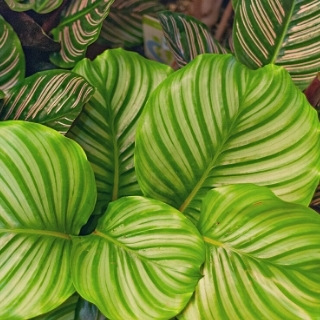
location
If you consider where calathea usually grows naturally, its habitat is the rainforest and it grows in the soil, you can imagine that this plant doesn't really need much direct sunlight. Tropical trees block the sun's rays and only a small amount of indirect sunlight falls on its leaves.
light
The light requirements of the calathea make it an attractive choice for low light homes, we say low light, which does not mean that it likes a very dark place. Keep in mind that calatheas do not do well in direct sunlight, because their leaves will burn, turn brown and die. Place your calathea in an area of the room that receives some indirect sunlight. As a general rule, the darker the foliage - as in the case of calathea ornata - the lower the light requirements.
temperature
The ideal temperature for calathea is generally between 16 and 26ºC. It is therefore a perfect plant for your home. The important thing is that it does not like the dry heat of our summers at all. So during the months of June to September you will often have to put the air conditioning on, but never put the plants in the cold air flow!
humidity in the air
Calatheas love to grow in a humid environment, but many varieties can withstand lower humidity levels. Ideally, relative humidity should be above 50% or more, while more sensitive varieties require higher humidity levels of around 60%.
The best way to increase the ambient humidity level is to use a humidifier (this investment will also benefit you). You can also place the pot on a tray filled with river pebbles and water. The pebbles will prevent the pot from being submerged in water, and the natural evaporation of the water will help keep the air around the plant moist.
spraying the leaves
There is also the option of spraying your calathea (and your calathea). The ideal frequency would be in winter every day and during the summer 3 or 4 times a week. Be careful not to spray their leaves too much at the top of the leaves (or that the water gets on the little stems that make the new leaves). Spray from the bottom upwards, and it is preferable to get a higher overall humidity rather than misting.
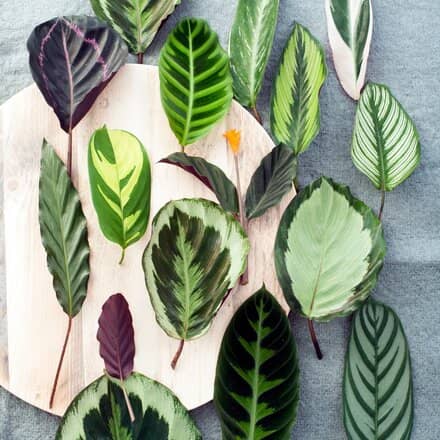
grouping plants together
By the way, all calatheas like to be all together or grouped together, this increases the humidity and makes them even happier. Moreover, calathes look beautiful together with their different foliage, like a 3D painting!
watering
Like the vast majority of houseplants, calathea enjoy filtered or non-chlorinated water. However, it can be a little more demanding than other plants. Simply fill the watering can and leave it overnight for the chlorine to dissipate. If there are other chemicals in your tap water, try using filtered or distilled water instead.
water shortage
If you water it too little, the leaves will start to droop, if that continues, they will dry out quickly. Always anticipate this by making sure the substrate is always slightly damp. Check twice a week to see if the plant is craving another splash of water. Stick your finger a centimetre into the soil to check the soil moisture; if it is dry, water it. Never let the soil dry out between waterings. In any case, it is always better to increase the frequency of watering than to increase the amount of water for calathea.
over-watering
Too much water on the other hand can cause yellow spots on the leaves and leaf drop. If you have a saucer under the pot, check if the plant is not in a puddle of water and remove the excess water directly. If the soil is really too wet, it is important to replace the substrate so that the roots do not remain in this condition for too long.
fertiliser
It is recommended to use nitrogen-rich fertilisers to encourage the formation of foliage. Fertilisation should be carried out every fortnight from the end of February to the end of August. Too much nutrition is bad for the plant and its roots. Fertilisation of calathea is not necessary in winter and autumn. This can even be detrimental to your plant.
repotting
Calatheas do not grow very fast and do not need to be repotted very often. You can usually use a larger pot as soon as you have bought a new plant. It is always a good sign that the roots are growing out of the pot, that is the time to repot. Always use a top quality substrate or soil and a pot at least 15% larger than the previous one. Make sure it has holes for drainage.
propagation
The propagation and multiplication of calathea is not very difficult. The new calathea should be transferred to individual pots with the same substrate as the mother plant. Sterile scissors should be used for this operation and fragments of the plant with more than 2 fully developed leaves should be cut off.
possible pests and diseases
We are not the only ones who like calatheas, there are also some little bugs that love them. When you see strange spots on the leaves, you should inspect your plant thoroughly. You should also look at the underside of the leaf and all the corners. Do you see little cotton webs or bugs running around on the leaf? This is the sign that your calathea plant is suffering from a pest. Buy or take out a good organic pest control spray.
Keep in mind: if your plant is in good health, if it receives enough water and light and is not exposed to draughts, it is much less likely to suffer from pests.
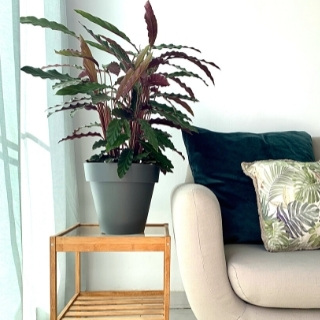
buy calathea
We love to search for and find the most beautiful calathea at the best nurseries. We also care about the environment and are committed to finding sustainable options. Plants and trees are the lungs of our planet. They should be cared for, pampered and kept happy, so that we can all enjoy this green joy at home. In our online shop various calatheas are waiting for you.
calathea rufibarba elgergrass
Discover this calathea rufibarba elgergrass 60cm! Order it now from our webshop, it arrives fresh from the nursery, is carefully packaged and will be delivered to your home within a week!
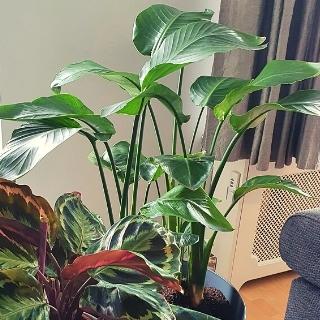
- height: 60cm ↕
- pot: 17cm Ø
- amount: 1
- colour: green and dark purple
- pet friendly
calathea medallion
Another fabulous calathea is the calathea medallion! ship it online in comfort and with our quality guarantee!
- height: 70cm ↕
- pot: 19cm Ø
- amount: 1
- colour: leaves in different green tones and down side is dark purple
- pet friendly
calathea rufibarba bluegrass
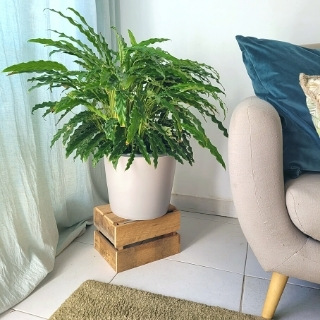
A calathea very similar to calathea rufibarba elgergrass is the calathea rufibarba bluegrass 60cm. Buy it online in comfort and we will deliver it to your doorstep at no extra cost!
- height: 60cm ↕
- pot: 17cm Ø
- amount: 1
- colour: green leaves
- pet friendly
No comments found.